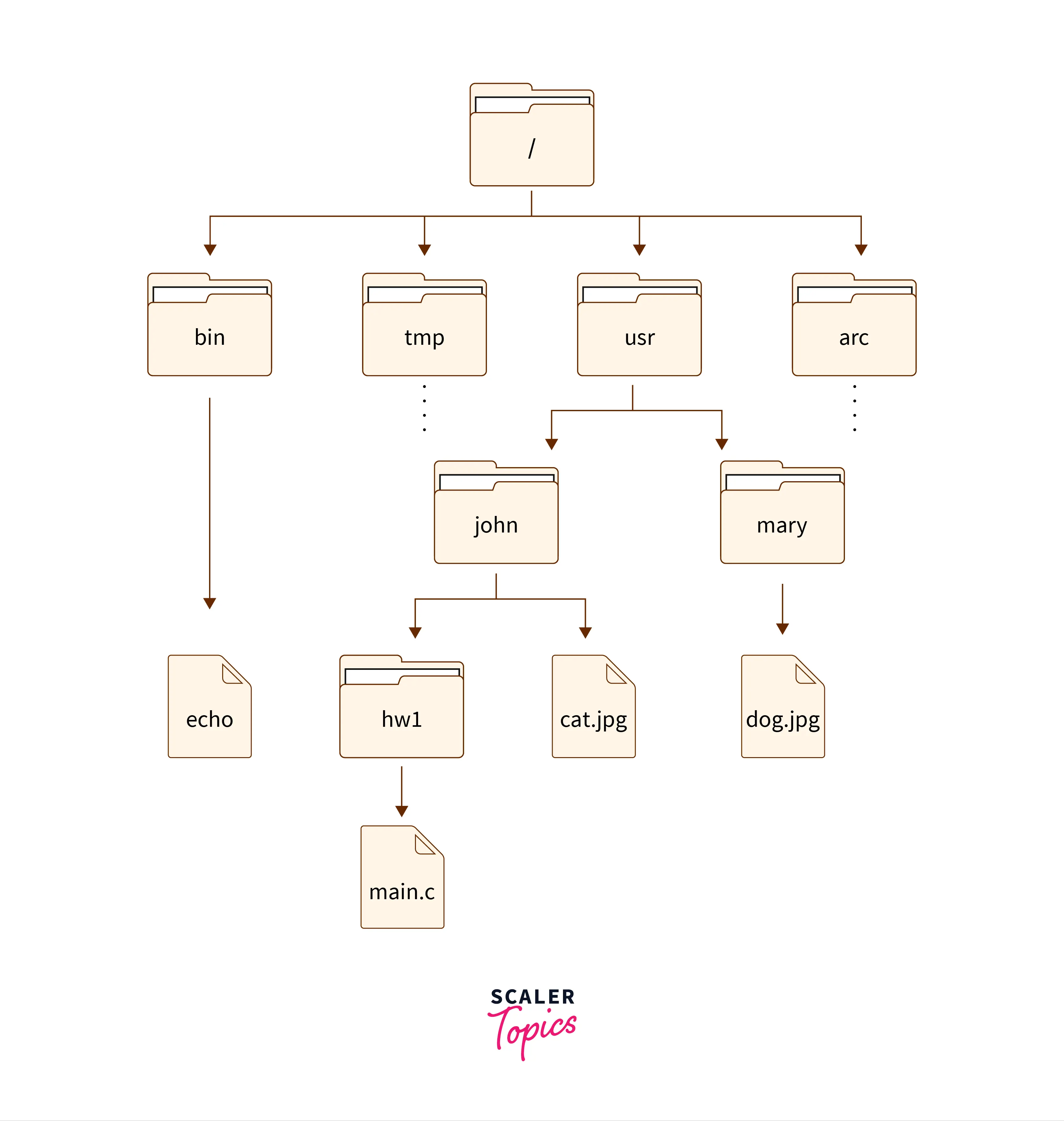A file is a collection of specific information stored in a computer system’s memory. There are various types of files in our computer-like text files, images, audio/video files, etc. All these files have different extensions. The file management system is responsible for the efficient storage, retrieval, and manipulation of files. The files are normally organized in a hierarchal manner in the form of files and folders (directories), so that management of these files can be easier from the user’s perspective as well. The left figure shows a generic file organization, and the right figure gives an example.

|

|
The file management system is also known as the file system, which is responsible for file management in any system. The various functions involved in file management are as follows:
- It is responsible for creating new files in the computer system and placing them in specific locations.
- It is responsible for locating the existing files in the computer system.
- It facilitates keeping the files in separate folders known as directories. These directories allow users to quickly search for files or organize files based on their types of uses.
|
Laughing is the best medicine. But if you’re laughing for no reason. You may need medicine. |